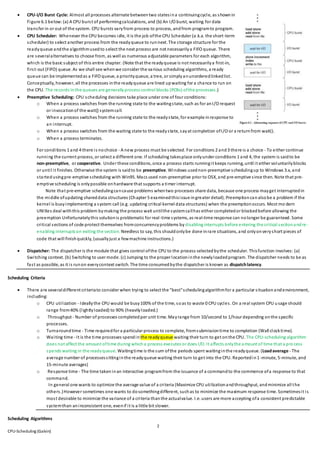This document provides an outline of topics related to CPU scheduling in operating systems. It discusses basic concepts like CPU-I/O burst cycles, scheduling criteria, and various scheduling algorithms including first-come first-served, shortest job first, priority, round robin, and multilevel queue scheduling. It also covers thread scheduling, multiple processor scheduling, real-time scheduling, and approaches to evaluating scheduling algorithms.




